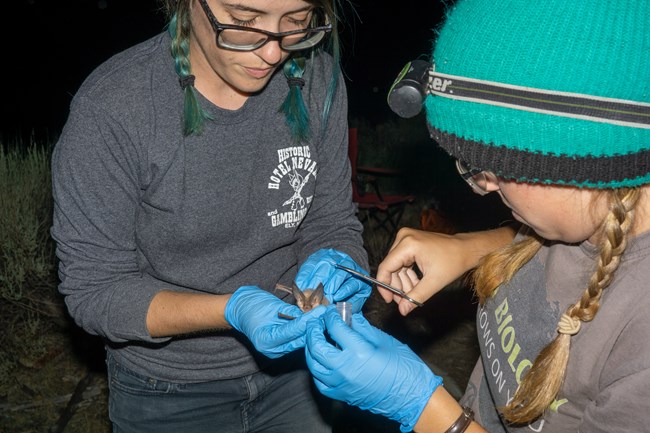Part of a series of articles titled The Midden - Great Basin National Park: Vol. 18, No. 2, Winter 2018.
Article
Townsend’s Big-Eared Bat Research
This article was originally published in The Midden – Great Basin National Park: Vol. 18, No. 2, Winter 2018.

Over the course of this summer, the Great Basin bat crew has been working in collaboration with Christopher Newport University (CNU) researchers and the Nevada Department of Wildlife to collect data on Townsend’s big-eared bats (Corynorhinus townsendii) in the area.
Trapping primarily occurred at known big-eared bat roosts in and around the park and at other opportunistic locations such as foraging areas. A new cave and big-eared bat roost was discovered in Spring Valley through CNU’s radio-telemetry project earlier this summer, so we were able to include this new roost in our trapping effort as well.

The CNU researchers were collecting data for both masters and PhD projects, including wing punch samples for DNA and hair samples for stable isotope research. From the group’s effort, 185 wing punches and 180 hair samples were collected for analysis.
Data from these collaborations will help build an understanding of bat ecology at multiple scales and help develop management plans for mitigating threats to bats, such as White Nose Syndrome.
Last updated: February 26, 2024
